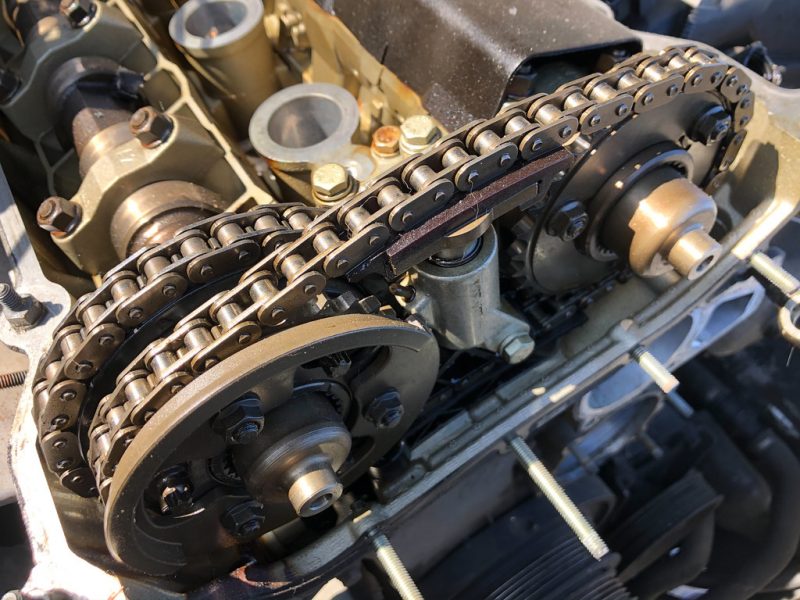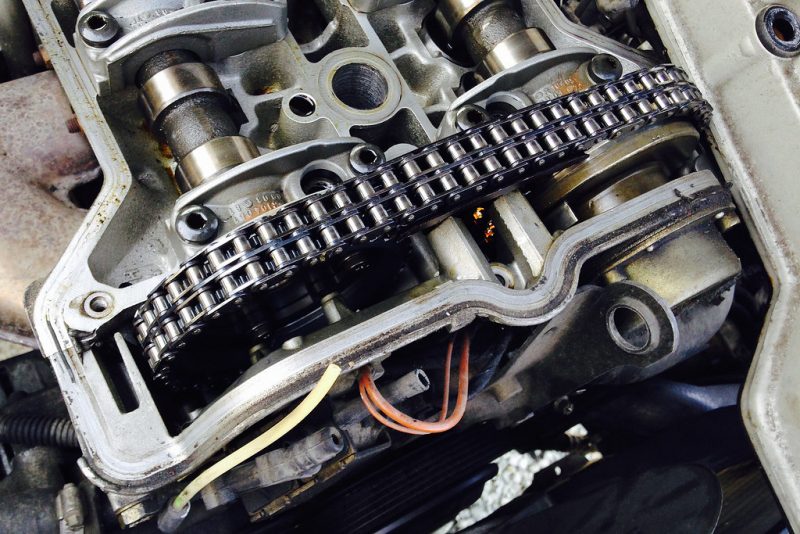Contents
– Role and constitution of the timing chain
– Advantages and disadvantages of the timing chain
– Timing chain: some helpful tips
The timing chain plays a key role in the engine’s operation, as it transmits the movement of the crankshaft to the camshaft and the high-pressure pump for the HDI engine or direct gasoline injection. After falling into disuse in the ’90s, it is coming back in force on current vehicles.
Here’s where we stand.
Role and composition of the timing chain
In the 4-stroke engine, the connecting rod and crankshaft convert the translational motion of the piston into rotational motion.
For the 4-stroke cycle, the camshaft opens the intake and exhaust valves at the right time. The crankshaft ensures the rotation of the camshaft with the help of the belt or the timing chain, which synchronizes these 2 elements.
The timing chain comprises metal links (it can be double) and synchronizes the crankshaft with the camshaft. The engine oil lubricates it, and its tension and guidance are ensured by rubber pads and a hydraulic tensioner (supplied by engine oil pressure).
Advantages and disadvantages of the timing chain
Here are its benefits:
– Its outstanding quality is its longevity, which is often equivalent to the vehicle’s life, de facto eliminating its periodic replacement (unlike the timing belt).
– Its lifetime maintenance-free operation allows for maintenance savings, a welcome argument when reselling.
Note: there is a new generation of belts operating in oil, allowing to dramatically lengthen periodic replacements (every 200,000 km or more!).
There are several drawbacks:
– Its weight, added to that of the guide shoes and the hydraulic tensioner, prevents it from being fitted to small engines. Indeed, any increase in weight is a source of consumption and pollution.
– It consumes energy because of the resistant forces generated by its rotation (much more significant than for a more flexible belt). For this reason, also, this technology is mainly found on larger engines.
– It generates tremendous operating noise than the timing belt.
Timing chain: some practical tips

Symptoms of malfunction
Despite its longevity, the timing chain can have failures, announcing a probable breakdown, invariably leading to engine failure. For instance:
– an abnormal running noise may be due to a slack chain. If it is accessible, check its tension manually;
– its elongation is a sign of wear: with some manufacturers, such as Mercedes, it is possible to measure its wear, and therefore its elongation, by checking the offset in degrees of the distribution.
Tip: there are workshop stethoscopes (same principle as medical stethoscopes) to listen to engine noises, but a big screwdriver will do the trick; you will be amazed by all the identifiable noises in the engine!
Replacing the timing chain
This one is improbable, as the timing chain is so reliable. If this were the case, this operation could present difficulties because of the disassembly of the timing case and its lack of accessibility.
In addition, since the timing gears are synchronized, the operation requires “precise timing”, often with the help of special tools.
Last but not least, a thorough technical knowledge of the engine operation is required.
For all these reasons, if you do not master the subject, it is advisable to entrust the operation to a serious professional…
Read more:
– The Solution to Combat Engine Fouling
– Why Will You Remove the Catalyst Converter?
– Why Perform a Car Diagnostic?
– 4 Essential Tips to Clean a Car Injector

